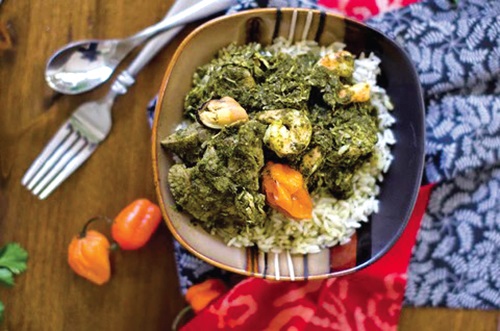Making African food the heart of our tourism story
More than a meal: Making African food the heart of our tourism story

What is Ghana’s staple food? This is a question I find surprisingly difficult to answer every time I travel and someone asks me.
It’s not because we don’t have delicious meals — we absolutely do.
The problem is that I don’t think we can agree on one single delicacy as our staple.
So, I end up blabbing about many dishes like banku, fufu, ampesi, waakye, beans and plantain (gobe), kenkey, and so on — not forgetting some of the amazing stews like palaver sauce, tomato stew, and garden egg stew, or soups like abenkwan, groundnut soup and light soup.
It’s tiring, man! And by the time I’m done, the person who asked is probably wondering if I’m reciting an entire restaurant menu.
Other countries have it easier.
Compare this to the culinary identities of other nations.
Ask an English person and they’ll confidently say fish and chips. Americans will tell you burgers or pizza.
Italians have their pasta and pizza.
The French will proudly mention croissants, coq au vin or escargots. Germans have bratwurst and sauerkraut.
These dishes are not just food — they’re brand ambassadors.
This is where countries like Ghana — and I daresay Nigeria too — struggle.
There are too many options to settle on one.
But even in Nigeria’s case, I know what pulls me back every time: edikaikong and any of the swallows.
That dish alone is enough to get me excited about a trip to Lagos or Abuja.
But again, Nigeria also has a myriad of options — ofe nsala, egusi, ogbono, jollof and more.
Regional simplicity
Other parts of the continent seem to have figured it out.
In Liberia and Sierra Leone, rice is life — they prepare it in endless forms and have mastered the art.
Senegal owns jollof rice — or thieboudienne, the original dish — and has made it their national identity. Morocco’s couscous is legendary and globally celebrated.
In Southern Africa, pap is the staple in countries like South Africa, Namibia, Botswana and Zambia. In Zimbabwe, it’s called sadza, and they have both white and brown versions — the brown one being quite similar to Ghana’s kokonte.
Rwanda’s version is kawunga, and in East Africa — Kenya, Tanzania and Uganda — it’s known as ugali. Same food, different names, equally beloved.
Let’s also talk about mopane worms — a Southern African delicacy.
You haven’t truly “eaten local” until you’ve tried them.
While in Zimbabwe in 2017, I couldn’t bring myself to chew on one, so I faked it.
I nodded enthusiastically while secretly slipping it off my plate when my host wasn’t looking.
Sierra Leone’s confident claim
In Sierra Leone recently, I met a hotelier who said she’d defer to Ghana on many things — but not food.
She claimed Sierra Leoneans cooked better meals and planned to prove it with a plate of jollof and fish.
Her Ghanaian husband supported her boldly.
The fish? Excellent. The jollof? Underwhelming — but I didn’t burst her bubble.
And she wasn’t the first Sierra Leonian who would rave about their culinary expertise.
The truth is that while jollof belongs historically to Senegal — and to an extent Gambia — it is Ghana and Nigeria that have carried the torch of global promotion.
Their friendly but fierce rivalry has given jollof rice international awareness like no other West African dish.
It’s probably the most recognised food from the region today.
Ghana’s visual signature – The egg
Speaking of recognisable food, there’s another growing culinary stereotype that’s gaining attention across the continent — Ghanaians and our obsession with eggs.
Blame it on Instagram and Gen Z foodies.
We’ve turned boiled eggs into a garnish for nearly every meal — from waakye to indomie, and shockingly, even fufu.
Friends from East and Southern Africa now ask, half-jokingly, “Do Ghanaians really eat that many eggs?”
It’s become part of how our food is perceived — visually and culturally.
Food as a tourism driver
Africa serves up some of the best food on the planet — from the spicy, soul-warming dishes of West Africa to the rich, meaty and milder flavours of the East and South.
But for all our culinary variety, the continent hasn’t done enough to market its food as a driver of tourism.
That’s why I’m glad the UN Tourism agency has started hosting the Africa Regional Gastronomy Forum.
The first edition took place in Victoria Falls, Zimbabwe.
The second was held in Arusha, Tanzania. And the third is set for Sierra Leone.
The idea is to promote African food as a key pillar of tourism promotion.
Time to tell our food stories
But these forums must be the beginning — not the end. We need consistent storytelling, travelling food festivals, cooking shows that spotlight local cuisine, and tourism campaigns that highlight culinary experiences.
Embassies abroad should be serving kenkey with shito, not just cocktail sausages.
Let’s create food trails across our countries. Imagine a “Taste Ghana” experience that takes tourists on a journey through the regions — waakye in Accra, tuo zaafi in Tamale, fufu in Kumasi, fomfom in Axim, etsew in Cape Coast, akple in Keta. Each dish tells a story. Each stop is a culinary postcard.
Food is memory. Tourists don’t just remember sights — they remember tastes, aromas, and the stories behind meals. If we get it right, our food can become as iconic as our forts, parks and festivals.
Come and taste it
African food should not be shy. It deserves the spotlight. We need to stop treating food as a footnote to tourism. It should be at the heart of it.
And maybe — just maybe — the next time someone asks me what Ghana’s staple food is, I won’t have to rattle off 12 options.
I’ll just smile and say, “Come and taste it for yourself.”



